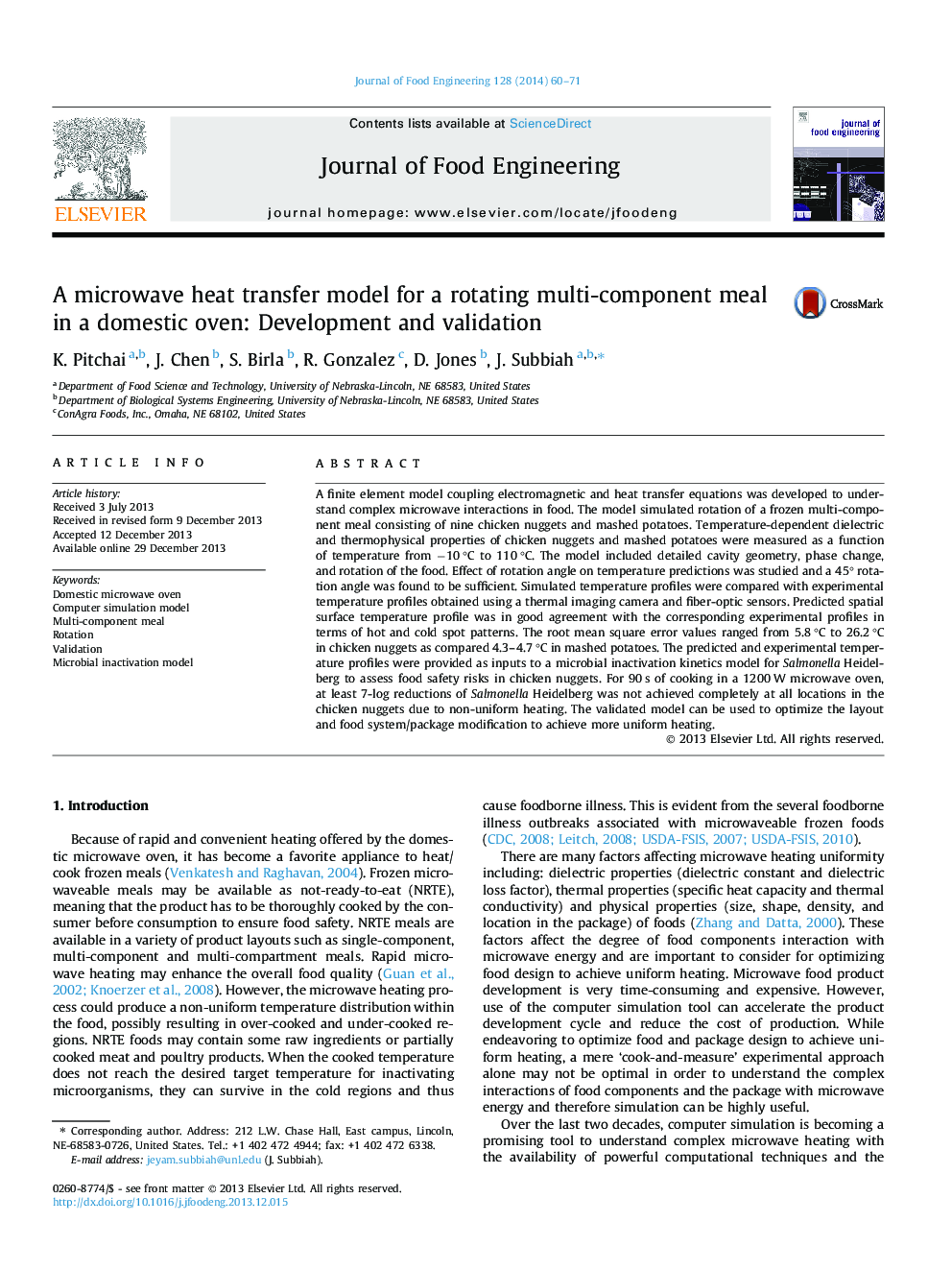| Article ID | Journal | Published Year | Pages | File Type |
|---|---|---|---|---|
| 6665961 | Journal of Food Engineering | 2014 | 12 Pages |
Abstract
A finite element model coupling electromagnetic and heat transfer equations was developed to understand complex microwave interactions in food. The model simulated rotation of a frozen multi-component meal consisting of nine chicken nuggets and mashed potatoes. Temperature-dependent dielectric and thermophysical properties of chicken nuggets and mashed potatoes were measured as a function of temperature from â10 °C to 110 °C. The model included detailed cavity geometry, phase change, and rotation of the food. Effect of rotation angle on temperature predictions was studied and a 45° rotation angle was found to be sufficient. Simulated temperature profiles were compared with experimental temperature profiles obtained using a thermal imaging camera and fiber-optic sensors. Predicted spatial surface temperature profile was in good agreement with the corresponding experimental profiles in terms of hot and cold spot patterns. The root mean square error values ranged from 5.8 °C to 26.2 °C in chicken nuggets as compared 4.3-4.7 °C in mashed potatoes. The predicted and experimental temperature profiles were provided as inputs to a microbial inactivation kinetics model for Salmonella Heidelberg to assess food safety risks in chicken nuggets. For 90 s of cooking in a 1200 W microwave oven, at least 7-log reductions of Salmonella Heidelberg was not achieved completely at all locations in the chicken nuggets due to non-uniform heating. The validated model can be used to optimize the layout and food system/package modification to achieve more uniform heating.
Related Topics
Physical Sciences and Engineering
Chemical Engineering
Chemical Engineering (General)
Authors
K. Pitchai, J. Chen, S. Birla, R. Gonzalez, D. Jones, J. Subbiah,
